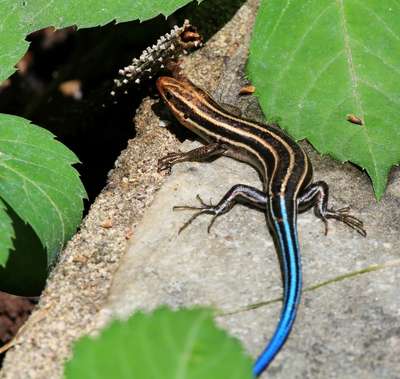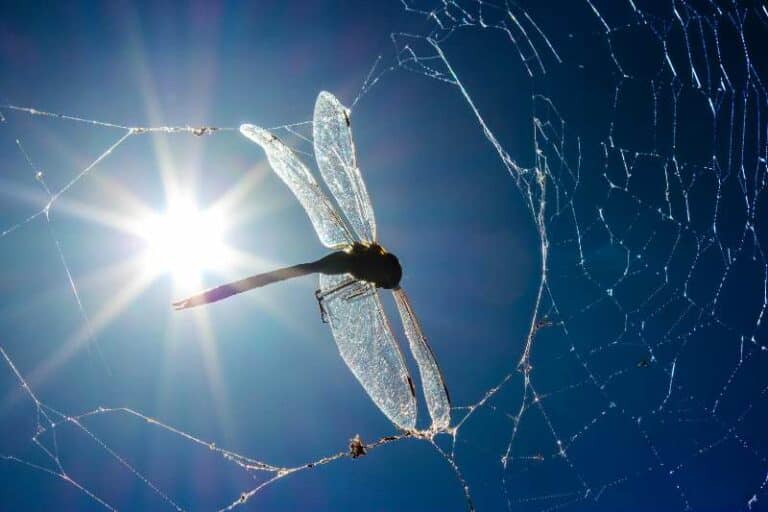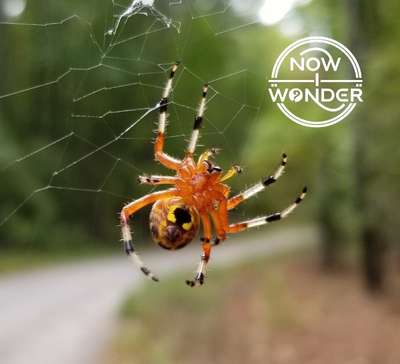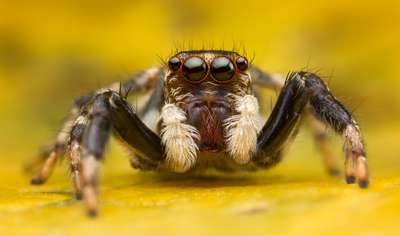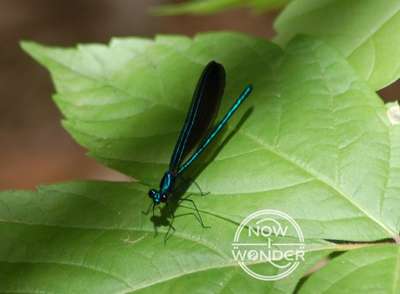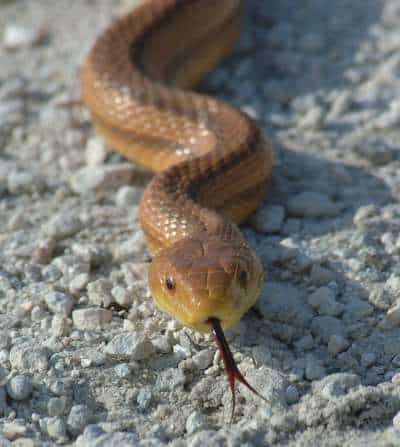In nature, function follows form, not the other way around. Many differences between dragonflies and butterflies are physically obvious but only tell half the story. These insects grow, live, mate, and behave very differently thanks to their physical differences. The physical adaptations one group evolved make them completely unsuitable for the lifestyle of the other.
Dragonflies and butterflies differ in nearly every way. Although both are large, flying insects, they have different wings, legs, senses, life cycles, and lifestyles. For these reasons, dragonflies are classified in order Odonata and butterflies in order Lepidoptera within class Insecta.
This post is the second in a two part Now I Wonder series and focuses on the significant differences in growth, development, mating behaviors, and lifestyles between these two common and well known groups of insects.
For more information about the physical differences that underlie and dictate their functional differences, check out the first post in the series Dragonflies vs. Butterflies Part 1: First Comes Form.
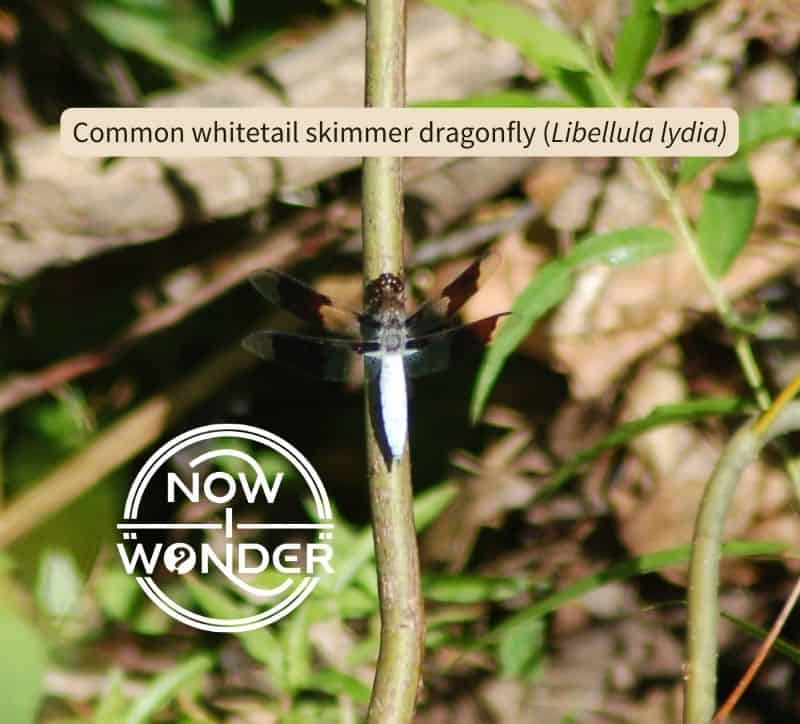
Dragonflies target mates; butterflies encourage mates
Dragonflies and butterflies go about the serious business of finding mates in different ways.
Dragonflies use their superb vision to spot members of their own species from afar and their fantastic flying ability to intercept suitable members of the opposite sex. Unlike many other kinds of insects, dragonflies do not manufacture pheromones to attract the opposite sex. They rely on visual cues to identify potential mates, such as body size, color, wing patterns, flight style, and perching position.
Most males watch the skies around them carefully for potential mates; when one sees a likely looking female – based on visual cues – it actively chases her until he either catches her and they mate or she escapes. As in many animals, male dragonflies compete for mates, although males mate with as many females as they can catch.
The swifter and more decisive a male dragonfly is when spotting a female of the same species, the more likely he is to ensure his genetic material makes it into the next generation. So males tend to be “fast off the mark” during mating season and chase any likely looking prospect. This bias towards mating action can sometimes result in a male dragonfly of one species mistaking a female of another species as a potential mate and catching her anyway.
The males of some dragonfly species males, such as the eastern amberwing (Perithemis tenera), court females by staking out territories to make themselves more attractive to local females (Tennessen 2009). Since dragonflies feed on flying insects that, by their nature, are mobile over broad areas, these territories usually include physical characteristics that make them attractive to females for oviposition, or egg-laying, such as aquatic vegetation.
These males will fly out to meet likely looking females, fly back and forth in front of them, and then head back to their territories and hover while fluttering their wings. Females communicate receptivity to mating by following the males into their territories and slowing their wing beats.
Male dragonflies defend their territories and their mates against rival males, either by patrolling their borders continuously or by perching to keep watch. When rival males encroach, the defending males zoom out and incredible aerial battles commence until the encroachers are driven off.
Vision is the key sense used by dragonflies throughout the mating process, in that they actively scan their environments for potential mates and use physical appearance to identify fellow insects of the same species and establish attractive territories, depending on the species.
Butterflies also use vision as the primary means to locate mates but differ from dragonflies in the way in which some species attract mates. Rather than establish and defend territories to advertise themselves, some male butterflies court females by releasing pheromones from special wing scales called “androconia” or “sex scales” to court females. These scales are usually thick, matte black patches or black bars called “stigmata” (Pyle 1981).
Pheromones are chemicals that cause behavior changes. In the case of butterflies, the pheromones released act as aphrodiasics, making the insects receptive to mating, but only after the males and females find each other by sight.
Dragonflies zoom; butterflies flit
Both dragonflies and butterflies are strong fliers but the way they fly is distinctive.
Dragonfly wings don’t overlap; the fore and hind wing pairs flap independently in a very precise and unique pattern called “antiphase”. The beat of the hind wings is timed so that they flap against air that hasn’t yet been disturbed by the beat of the fore wings, which gives them remarkable agility in the air, including the ability to hover and fly backwards. They also twist their wings on the downstroke to move the air much faster over the upper wing surface, which generates a lot of lift (Imes 1992).
In contrast, butterflies hook their fore and hind wings together in flight to make one extremely large pair of wings. This design and behavior lets them catch a lot of air with every wing flap and ride thermals, which are columns of rising air heated by sunlight.
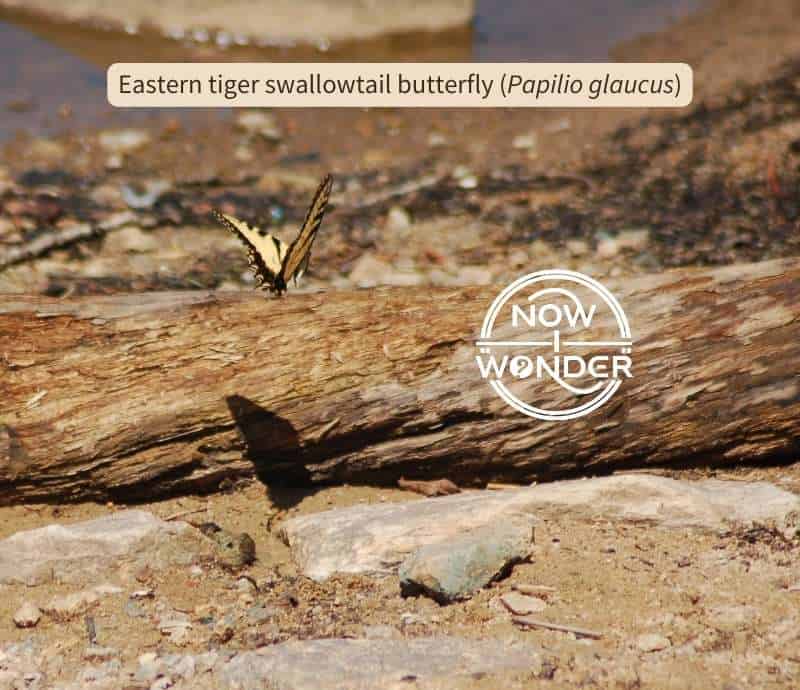
Dragonflies can hover for long periods of time without seeming to apply much effort. On the other hand, very few butterflies have the ability to hover and those species can’t hover for very long or very well so they tend to feed on plants whose flowers provide space for the insects to land.
Dragonfly flight is extremely goal-directed. Because they are aerial hunters, they know exactly where they want to go before taking flight and zoom through the air at speeds up to 35 mph (56 kph) to get there; they don’t fly at random and either eat while flying or perch to consume larger prey.
Butterfly flight is also goal-directed in the sense that they fly to seek food and mates, and find shelter from predators, but their flight style is more “seek and ye shall find”. Butterflies drink nectar, so they must search the landscape for suitable, nectar-producing flowers. So they spend a lot of time coursing through the air, looking for food. They flit through the air, often zigzagging across an area, and only alight to eat (or lay eggs).
Dragonflies are insectivores; butterflies are herbivores
Dragonflies are predators during all their life stages. As aquatic naiads, they hunt and kill pretty much any creature they can catch, including insects, tadpoles, and even small fish. As adults, they hunt flying insects, especially flies, midges, and mosquitoes, but also other dragonflies and even butterflies.
In contrast, butterflies are exclusively herbivorous in their larval stage and nectarivorous as adults. Caterpillars represent the larval stage of the butterfly life cycle and are basically leaf-eating machines. They do nothing but consume plant material voraciously and grow larger until they pupate in preparation for metamorphosing into adults.
As adults, butterflies either don’t eat at all or drink nectar to fuel their search for mates and, in the case of females, the development of eggs. Butterflies suck nectar through a long, thin proboscis made up of two linked tubes, like a human sucking soda through a drinking straw.
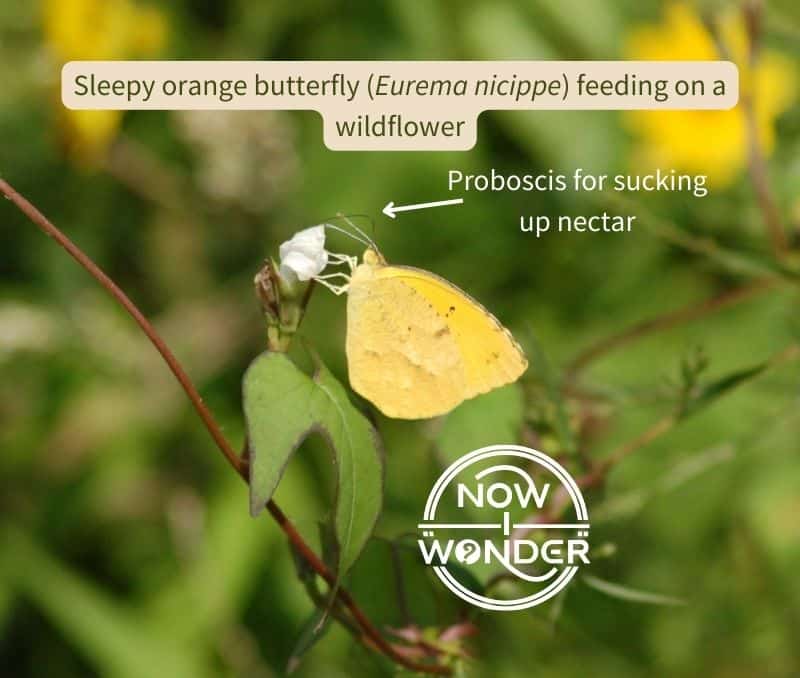
This sleepy orange butterfly (Eurema nicippe) has extended its long, thin mouthpart (called a proboscis) into the nectary of this wildflower and is sucking up nectar for food.
Dragonflies rely on water; butterflies rely on land
Dragonflies are never found very far from freshwater, whether ponds, rivers, or lakes, as these environments are where they find their prey, such as flies, mosquitoes, and midges. Water is vital to their reproduction and larval stages.
Egg-laying varies by dragonfly species but involves freshwater. Some species lay their eggs directly under the surface of the water, others attach their eggs to underwater vegetation, and others actually slice open underwater vegetation and lay their eggs inside. The males of dragonfly species which rely on aquatic vegetation for the females’ egg-laying establish territories that include these plants.
Unlike many other groups of insects, the larval stage of their lives are spent underwater. After hatching underwater, the larvae, called nymphs or naiads, crawl or swim to the bottom, where they remain for one month to five years, depending on the species (Pocket Naturalist Guide 2019).
Once ready to become adults, the young dragonflies climb out of the water, molt a final time, and fly off to hunt for both food and mates.
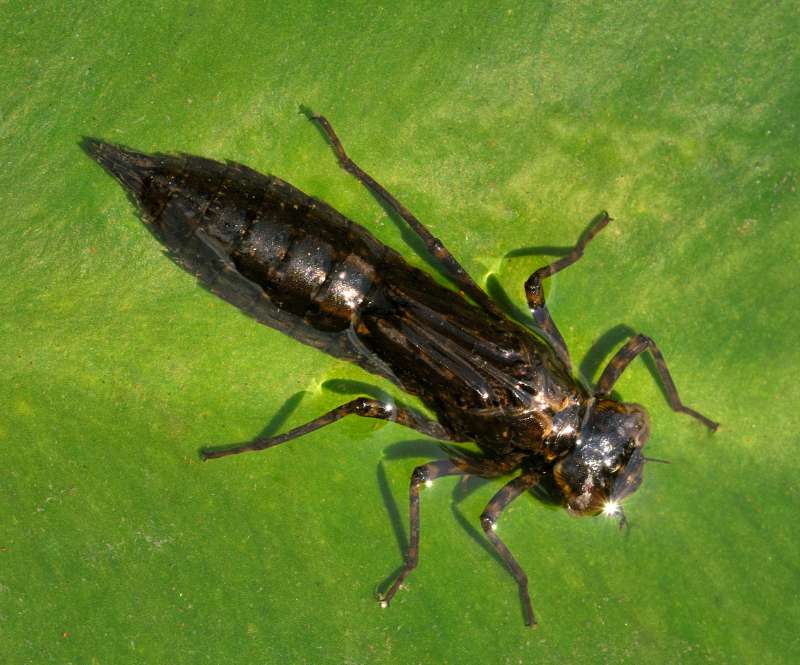
On the other hand, butterflies spend all their life stages on land. Female butterflies lay their eggs on specific species of land plants. The eggs either hatch in the fall or overwinter and hatch in the spring and immediately start eating their host plants. They pupate by attaching themselves to plants and metamorphosize into their familiar adult butterfly forms.
Dragonflies grow up; butterflies transform
Dragonflies are “hemimetabolous” insects and undergo incomplete metamorphosis, which normally means that the larvae look very similar to adults only without wings and sexual organs. Dragonflies are slightly different from other hemimetabolic insects in that the naiads look very different from the adults. However, larvae and adults share enough anatomical structures during both life cycle stages that their metamorphosis is considered “incomplete”.
This is in stark contrast to the metamorphosis of butterflies, which is complete. Lepidopterans are famously “holometabolous”. This means the larvae undergo total rearrangement of their bodily tissues during the transition between larval caterpillar form and adult butterfly form, while they are packed into their protective chrysalises. Caterpillars are still clearly identifiable as insects as they still have six legs, but the similarities between them and the adult forms they will eventually assume end there.
Caterpillars grow through many instars, which are the intervals between larval growth spurts; they get bigger every time by means of splitting their existing skin and crawling out. Eventually, they form a chrysalis, their bodily tissues dissolve, and rearrange themselves into the adult butterfly or moth form, complete with large wings, long antennae, and extendable proboscises.
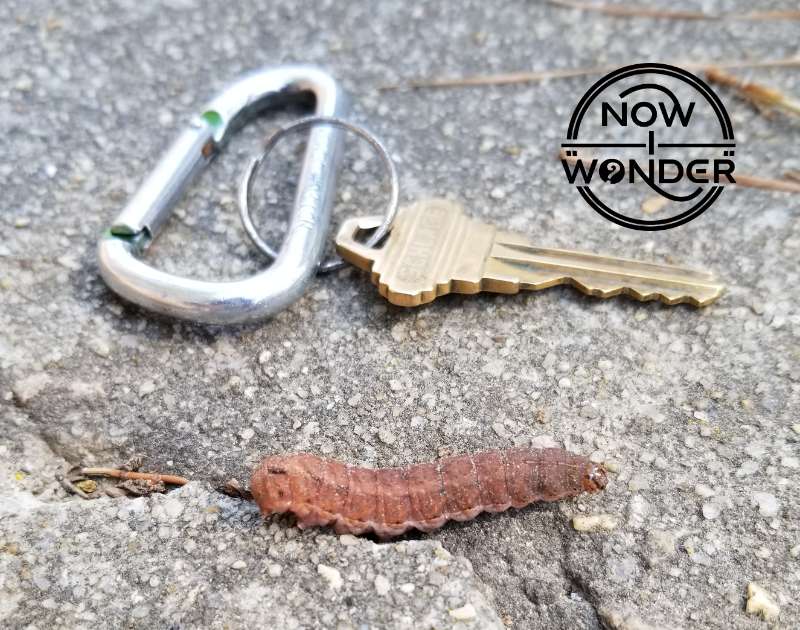
Dragonflies are good guys; butterflies can be villains
Dragonflies are universally beneficial to humanity. They eat countless flying insects that can harm humans directly, such as horseflies and blackflies that bite and wound our skin, and indirectly, such as mosquitos that not only bite us but also transmit fatal diseases like malaria. They don’t bite or sting and also serve as a source of food for many other animals, such as birds and bats.
Adult butterflies help humanity by pollinating flowering plants; as an insect order, they are major pollinators behind only bees in importance and impact. However, caterpillars do tremendous damage to plants of economic importance every year. High densities of caterpillars can defoliate entire fields or huge trees, and various lepidopteran species do tremendous damage to fruit plants, cotton, corn, potatoes, and many other important food plants.
Here is a short list of some important human food plants upon which butterflies feed.

Conclusion
Dragonflies and butterflies and moths are all insects but occupy different niches in the natural world. Each evolved specific characteristics over millions of years that dictate their behaviors and lifestyles; dragonflies are suitable only for life as predators near freshwater and butterflies are suitable only for living off flowering plants anywhere flowering plants exist. Neither can live the other’s life. However, both are vital to the ecosystems in which they are found and both are fascinating wonders of the natural world.
Related Now I Wonder Posts
For more about dragonflies and other insects in order Odonata, check out these other Now I Wonder posts:
- Is a dragonfly a fly?
- Can dragonflies walk?
- What do dragonflies do at night?
- What is the difference between a dragonfly and a damselfly?
- Dragonflies vs. Butterflies Part 1: First Comes Form
For more information about insects in general, check out these other Now I Wonder posts:
- Do insects ever eat spiders? Part 1: Attacks from the air
- Do insects ever eat spiders? Part 2: Attacks from the ground
- Do insects have blood?
References
Brock, Jim P., and Kaufman Kenn. 2006. Kaufman Focus Field Guides Butterflies of North America. Houghton Mifflin Company.
Imes, Rick. 1992. The Practical Entomologist. New York (NY): Quarto Publishing plc.
Pocket Naturalist Guide. 2019. Dragonflies & Damselflies. Waterford Press.
Pyle, Robert Michael. 1981. National Audubon Society Field Guide to Butterflies: North America. New York (NY): Alfred A. Knopf.
Tennessen, K. J. “Odonata.” In Encyclopedia of Insects, edited by Vincent H. Resh, and Ring T. Carde. 2nd ed. Elsevier Science & Technology, 2009.

